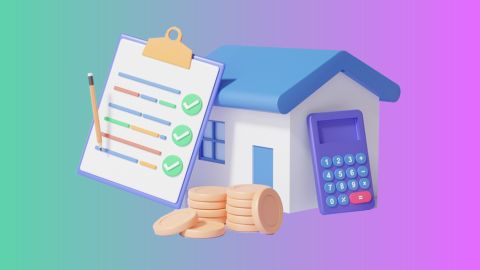In this article, we will delve into the concept of maximum tenure for LAP, helping you make informed decisions about choosing the right tenure for your needs. Additionally, we will explore the various factors that influence the tenure and provide insights into the risks and benefits of longer tenures. If you are interested in learning more, be sure to check out Bajaj Finserv Loan Against Property for details on eligibility, fees, and features.
What is Loan Against Property Maximum Tenure?
The loan against property maximum tenure refers to the longest period over which a borrower can repay their LAP. Generally, the tenure for LAP can range up to 15 years, depending on various factors such as the lender’s policies, the borrower’s age, and the property type. Choosing the right tenure is essential, as it directly impacts your monthly EMI payments and the total interest paid throughout the loan’s life.A longer tenure typically results in lower monthly EMIs but increases the overall interest payable. Conversely, shorter tenures may lead to higher EMIs but result in lower interest costs over the loan period. Bajaj Finance offers flexible repayment tenures based on your needs. It is essential to understand how the tenure affects your financial burden before committing to a particular term.
Factors Affecting Maximum Tenure for Loan Against Property
Several factors determine the maximum tenure that you can opt for when applying for a LAP:- Lender’s policies: Different lenders offer to vary maximum tenure options. While some provide a tenure of up to 10 years, Bajaj Finance can extend it up to 15 years.
- Borrower’s age: Younger borrowers may qualify for longer tenures, while older individuals may be offered shorter terms based on their remaining working years.
- Type of property: Residential properties may have different maximum tenures compared to commercial ones.
- Loan amount: Higher loan amounts may come with stricter tenure limits depending on the lender’s risk assessment.
- Income stability: Borrowers with stable income are likely to get better tenure options.
How to Determine the Maximum Tenure for Your LAP?
Determining the maximum tenure for your LAP is a crucial decision. Start by assessing your current and future financial capabilities. Ask yourself: can you comfortably manage higher EMIs, or do you need to stretch payments over a longer period to ensure affordability?An EMI calculator can help you visualise different tenure scenarios. For example, using the Bajaj Finserv Loan Against Property EMI Calculator, you can experiment with various loan amounts, interest rates, and tenures to find a balance between affordable EMIs and total interest outgo. It is essential to pick a tenure that aligns with both your financial goals and repayment capacity.
Benefits of Opting for a Longer Tenure in LAP
Opting for a longer tenure in your Loan Against Property can provide several benefits:- Lower monthly EMIs: A longer tenure spreads out your repayment, reducing the monthly EMI burden, making it easier to manage cash flow.
- More time for financial planning: With lower EMIs, you have more time to plan your finances and allocate money to other essential expenses.
- Eligibility for larger loan amounts: With a longer tenure, you may qualify for a higher loan amount since the monthly EMI will be lower, improving your debt-to-income ratio.
- Flexibility in repayment: With longer tenures, you get more flexibility in making prepayments or part-payments, helping you reduce the interest burden over time.
Risks of a Longer Tenure for Loan Against Property
While a longer tenure may offer lower monthly payments, it comes with some risks:- Higher total interest payable: Although your EMIs may be lower, the total interest paid over the loan term increases significantly.
- Extended debt burden: Staying in debt for a longer period may impact your financial freedom, limiting your ability to take on other financial responsibilities.
- Impact of rising interest rates: In case of floating interest rates, a longer tenure exposes you to more fluctuations in interest rates over time.
- Risk of financial strain in later years: If you choose a longer tenure, ensure that it does not extend into retirement or periods of reduced income.




